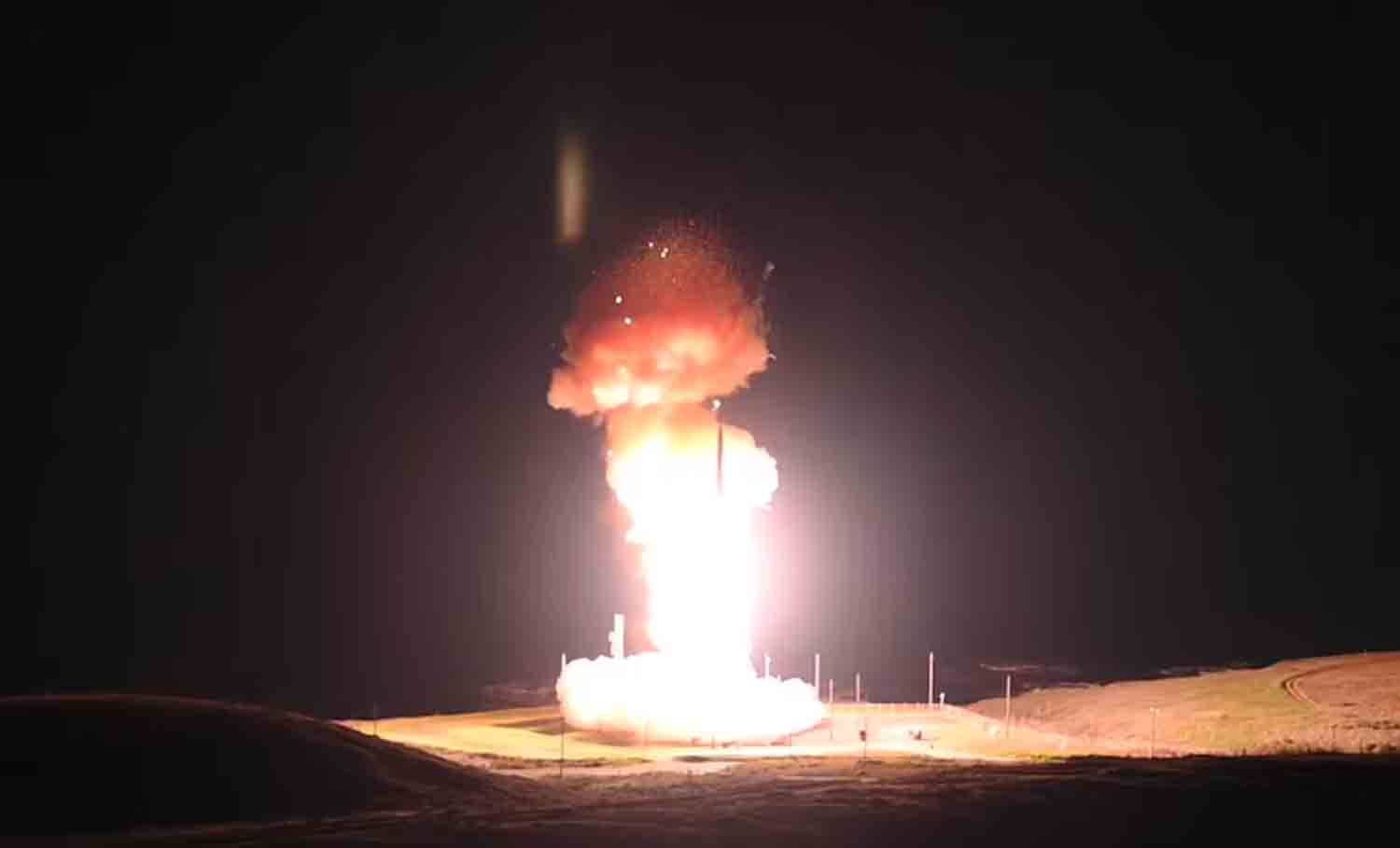The United States Air Force executed a test launch of an unarmed Minuteman III missile early Wednesday to verify the operational safety and effectiveness of its land-based nuclear capabilities.
Airmen from the Air Force Global Strike Command initiated the launch from Vandenberg Space Force Base in California at 1 a.m. Pacific Standard Time, as reported by the department. The Minuteman missile did not carry a nuclear warhead; instead, it was fitted with a test re-entry vehicle designed to relay data.
The missile traveled approximately 4,200 miles at speeds exceeding 15,000 mph, reaching the Ronald Reagan Ballistic Missile Defense Test Site located at Kwajalein Atoll in the Marshall Islands. Personnel at the test site, managed by the Army Space and Missile Defense Command, gathered radar, optical, and telemetry information as the missile approached to assess its performance.
“Today’s Minuteman III test launch exemplifies one of the methods the Department of the Air Force employs to showcase the readiness, precision, and professionalism of U.S. nuclear forces,” stated acting Air Force Secretary Gary Ashworth. “It also reinforces confidence in the effectiveness and lethality of the nation’s nuclear deterrence strategy.”
The Air Force maintains an arsenal of approximately 400 Minuteman III intercontinental ballistic missiles, which play a vital role in the nation’s nuclear triad, alongside bombers and submarines capable of carrying and deploying nuclear arms.
The Minuteman III system, over 50 years old, is nearing the end of its operational lifespan. The Air Force, in collaboration with Northrop Grumman, is developing a successor, the LGM-35A Sentinel, which is expected to begin deployment in the 2030s.
The ground-based systems for Sentinel, especially its control infrastructure, turned out to be more complex than the Pentagon had initially anticipated, leading to a significant increase in projected future costs. This situation raised concerns within the Pentagon and Congress in early 2024, prompting a thorough review of the program.
Ultimately, the military concluded last summer that Sentinel was too vital to be scrapped, and the Air Force was directed to continue its development to succeed the Minuteman III. However, the Pentagon mandated the Air Force to reorganize the program to reduce the expected costs.
According to Pentagon officials in 2024, this restructuring of Sentinel is likely to postpone its deployment by several years, necessitating the Air Force to depend on the Minuteman III for a longer period than initially planned. Andrew Hunter, the Air Force’s then-acquisition chief, stated in July 2024 that the Air Force would “do what it takes to sustain Minuteman III to meet these warfighter requirements in the interim,” until Sentinel is operational.
Col. Dustin Harmon, commander of the 377th Test and Evaluation Group at Vandenberg, which oversaw the test launch, emphasized that the data gathered from this test is essential for maintaining the Minuteman III while preparing for Sentinel.
“During this test, we collected and analyzed performance and other critical data points to assess the current missile system’s capabilities,” Harmon explained. “This enables our team to evaluate and report on the accuracy and reliability of the existing system while confirming anticipated improvements in the missile system.”
The Air Force indicated that this test had been planned for several months and is part of a series of over 300 similar test launches routinely conducted by the department.
Vandenberg’s Western Range serves as the primary testing site for Global Strike’s ICBMs. In a video released shortly after the test, a silo cover at Vandenberg can be seen opening before the test Minuteman launches in a blaze of fire, soaring into the pre-dawn sky.
The missile was chosen at random from the Air Force’s inventory at F.E. Warren Air Force Base in Wyoming. Personnel then transported the missile over 13,000 miles to Vandenberg, where it was reassembled for testing.
Additional Minuteman III missiles are stationed in Colorado, Montana, Nebraska, and North Dakota, distributed over an area of nearly 32,000 miles.
Discover more from Defence Talks | Defense News Hub, Military Updates, Security Insights
Subscribe to get the latest posts sent to your email.





